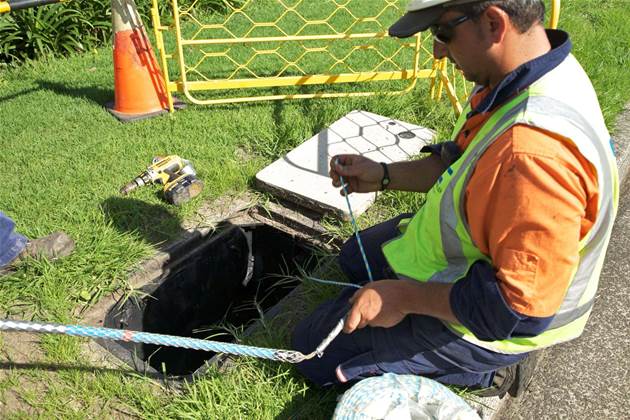The Coalition has three policy options available to it for the National Broadband Network should it gain power in September's federal election, according to a new report.

The joint Venture Consulting and Allen & Overy "NBN Options for a Coalition Government" report, released today, studies the policy alternatives available to a Coalition government in an effort to provide some form to how a national broadband network would operate under a change of government.
The 126-page report outlines five critical issues facing the Coalition, including:
- the market for broadband services and the unlikelihood that costs to customers and RSPs would increase over time as data usage grows
- regulatory issues around competition
- the NBN’s technology mix
- ownership of the NBN, and
- the potential resistance from Telstra and Optus if the Coalition attempts to remove value from agreed arrangements.
The report states a Liberal Government could restructure the NBN in three ways that are not mutually exclusive.
NBN Co could be left mostly as-is but with different technology; split into separate metro and regional companies; or become part of a completely new national wholesale access entity which could include a demerger of Telstra’s customer access network assets, the report states.
The report said separating NBN Co into regional metro entities was the most viable option.
By contrast, canning the NBN was not a credible option, given the further expense and unpopular electorate reception it would likely receive, according to the report.
The report's authors believed the Coalition is likely to spend 12 months after the election undertaking a cost benefit analysis and renegotiating the Telstra and Optus contracts.
The report forecast private sector tenders under a Coalition-led plan would not be held until 2015, while creating an entirely new entity to oversee the NBN would be unlikely to occur before a second Coalition term.
However, Labor’s ‘limited’ progress with the rollout thus far put the Coalition in a good position to renegotiate the initiative, the report said.
The Coalition has promised to honour existing contracts. But the report’s authors expect the Coalition would defer significant fibre-to-the-premise spending while it reviews the situation, possibly slowing the FTTP build while seeing through fixed wireless builds and satellite contracts.
The report warned not to expect a fully-costed Coalition policy until the event of it rises to power in September. However, a detailed Liberal broadband policy is expected to officially arrive in the next few weeks.
The Coalition has repeatedly said it is unable to provide a costing due to an inability to access NBN Co contracts and financial information.
However, the report said the Coalition still had many questions to answer on its policy’s cost, effect on end-users, choice of technology mix, alternative ownership structures and overall policy goals.
It criticised a lack of analysis of the above issues following the 2007 election as causing weak bipartisan support for the project, but said Labor’s commitment to its choice of FTTP technology made it susceptible to criticism.
A reset of Australia's broadband policy
The report’s authors called for a reshaping of Australia’s broadband policy, irrespective of which party is in power.
They said projections contained in the NBN business plan were questionable due to the lack of a fibre premium and an unsustainable return on investment (ROI).
“The NBN Co plan implies that, over time, as customers use more and more data they will pay more and hence the amount that RSPs will pay NBN Co will also increase,” the report stated.
“Global benchmarking suggests that this is unlikely. Market demand predictions and economics provide some clues as to why this would be the case.”
“The plan implies that NBN Co’s profit margins and return on investment (ROI) will rise over time. These ‘outer-year’ margins and ROI look unsustainable from a regulatory or political perspective.”
FTTN for 53 percent of premises?
Cost benefits will drive the Coalition’s NBN policy, rather than the technology as with Labor’s NBN, the report stated.
The report proposed a situation where a mix of broadband technologies could be used to achieve the aim of providing fast broadband services to Australians.
It proposed a scenario where 47 percent of premises in Australia could be judged to have an adequate broadband connection by this year's federal election.
"It is a reasonable assumption that by the time of the September election 17 percent of the target premises are either passed by the FTTP network or it is efficient to complete the passing (assuming a further 5 percent is required by existing contractual commitments)," the report stated.
"We know that 2.6 million households or approximately 20 percent [of premises] are already covered by HFC networks (and are also a quick deployment win).
"It may be a reasonable assumption that an additional 10 percent of premises can be addressed through the fixed wireless and satellite networks and that the fixed line footprint reaches out to the 83rd percentile of the least remote premises (another quick deployment win)."
On those assumptions, the report said, following the election, NBN Co could then focus on deploying FTTN to the remaining 53 percent of premises using a network platform that is faster to deploy.
"If we assume that the FTTN deployment can reach a further 30 percent of the population by the end of 2016, then by the next Federal Election 75 percent of premises could be receiving high-speed connections with the remainder of the population looking at a near term solution."




_(20).jpg&h=140&w=231&c=1&s=0)
.png&h=140&w=231&c=1&s=0)





 iTnews Executive Retreat - Security Leaders Edition
iTnews Executive Retreat - Security Leaders Edition












_(1).jpg&h=140&w=231&c=1&s=0)



